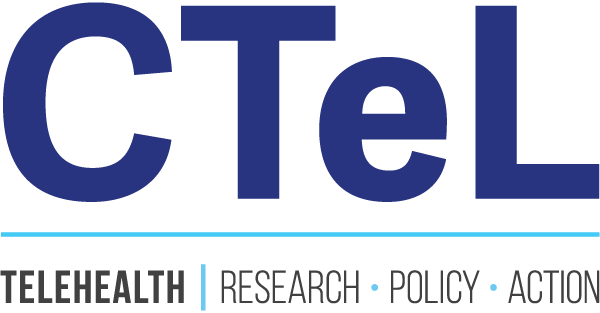Beyond the Bottom Line: Summit Highlights Path to Proving Telehealth's True Value
At the 2025 CTeL Digital Health Summit, held June 11th on Capitol Hill, key voices were brought together to dissect the complex economics of telehealth. While the overarching theme was a necessary shift from debating "cost savings" to proving "cost-effectiveness," a closer look at the discussion reveals critical details that provide a richer understanding of the challenges and opportunities in scoring telehealth's true value.
Key Insights You Might Have Missed
Here are five crucial insights from the session that add significant depth to the conversation:
The CBO's Model is Broader Than You Think. The Congressional Budget Office's (CBO) analysis isn't limited to Medicare fee-for-service. When telehealth use increases spending in that program, the CBO also factors in the resulting spending increase in the Medicare Advantage program. Their models also account for real-world utilization trends, noting that telehealth spending has "declined markedly" from its pandemic highs.
Provider Infrastructure Costs Aren't Part of the Score. When the CBO calculates the cost of telehealth legislation, it focuses on federal payments for services provided to beneficiaries. This means that the significant initial and ongoing costs that providers bear, such as IT infrastructure, EHR integration, and technology setup, are generally not captured in their estimates.
The "Typical" Telehealth User May Not Be Who You Expect. A study of Mississippi Medicare beneficiaries produced a surprising demographic profile. The majority of telehealth users were not rural but were living in non-rural, non-Health Professional Shortage Areas. They were also sicker, younger, and more likely to be white, female, and have dual eligibility.
The Legislative Clock is Ticking on Specific Services. The current urgency is driven by a set of telehealth flexibilities scheduled to expire at the end of the fiscal year. The CBO is focused on this subset of services, as many of the key flexibilities for behavioral health have already been permanently extended.
"Telehealth" Isn't a Monolith. The term covers a wide range of services with different impacts. A VA psychiatrist noted that 60% of his patients with opioid use disorder communicate best via asynchronous messaging in an app—they won't even answer the phone. This highlights that different modalities are critical for reaching different patient populations.
A Deeper Dive into the Discussion
The CBO's Calculation: A Look Under the Hood
Asha Saavoss, the CBO’s Chief of the Medicare Cost Estimates Unit, provided a transparent look into their non-partisan process. She explained that their models have historically found that telehealth expansion increases net federal spending. This is due to the cost of new services and the follow-on care initiated by that increased engagement with the healthcare system.
Crucially, this analysis isn't siloed; the CBO recognizes that increased spending in the Medicare fee-for-service program also leads to higher spending in Medicare Advantage, an effect they include in their scores. This comprehensive view, combined with the acknowledgment that provider-side infrastructure costs are not part of the calculation, helps clarify what a CBO "score" truly represents: the cost to the federal government for beneficiary services, not the total cost to the healthcare system.
The Core Debate: Shifting from Cost Savings to Proving Value
Dr. Ateev Mehrotra of Brown University framed the central challenge, arguing that telehealth is often unfairly burdened with the expectation of generating immediate cost savings. "Almost everything increases spending," he stated, "but are we gaining commensurate benefits in terms of health outcomes?".
This is the essence of cost-effectiveness. Jason Goldwater of Laurel Health Advisors added that his firm’s economic studies measure this by looking at "quality-adjusted life years," a standard economic output to compare telehealth interventions to not having an intervention at all. The consensus is clear: the goal should be to prove telehealth improves health at a reasonable cost, not to chase the often-elusive goal of net savings.
Who Uses Telehealth, and What is the True Impact?
Challenging common assumptions, Dr. Saurabh Chandra presented groundbreaking research from the University of Mississippi Medical Center. His team sought to answer a pivotal question: "Is the healthcare cost and utilization... because of telehealth or is there something in the patient population that is using telehealth?".
After creating a "pseudo population" to compare truly similar patient groups, his study revealed that telehealth was associated with:
An increase in ED and outpatient visits.
A decrease in costly inpatient admissions.
A significant decrease in overall spending across all categories.
This suggests that when used by sicker populations with unmet needs, telehealth doesn't cause higher costs but rather manages health more efficiently, preventing more expensive escalations of care.
The Broader View: Social ROI and High-Value Applications
The conversation also expanded the definition of "value." Mr. Goldwater emphasized the "social return on investment," which includes benefits that don't appear on a federal ledger but are critical to patients and society:
Savings from not driving or requiring childcare.
Avoiding lost wages from taking time off work.
Reduced environmental impact.
This broader value is most apparent in specific, high-impact applications. An audience member cited a telepsychiatry program that gives rural hospitals access to specialists, preventing 46% of involuntary commitments and generating a three-to-one ROI for the state by avoiding expensive patient transfers and inpatient stays. This, along with the example of using messaging apps to support veterans with opioid use disorder, demonstrates that targeting telehealth to where the value is highest is a powerful and effective strategy.
Panelists at the 2025 CTeL Digital Health Summit, Dr. Saurabh Chandra of the University of Mississippi Medical Center. and Asha Saavoss, the CBO’s Chief of the Medicare Cost Estimates Unit


